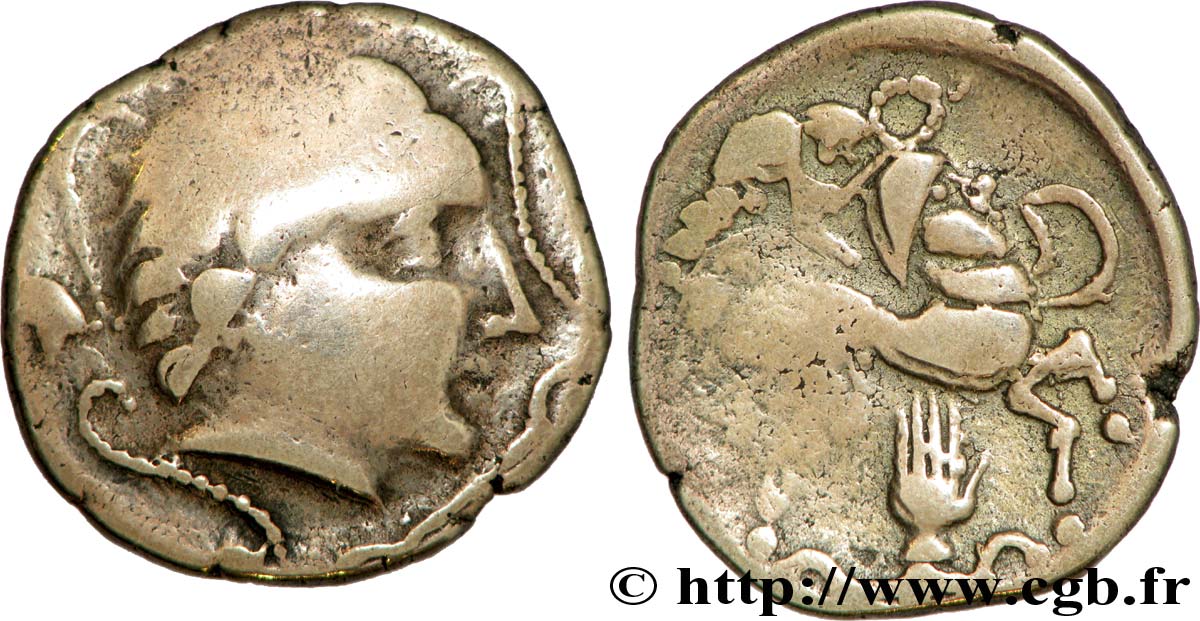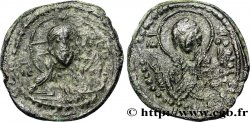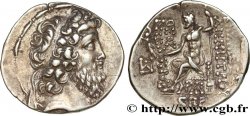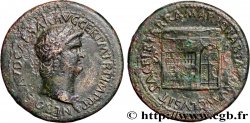v34_1260 - GALLIA - PICTONES (Regione di Poitiers) Statère d’électrum à la main
MONNAIES 34 (2008)
Начальная цена : 500.00 €
Назначить цену : 900.00 €
Цена реализации : 529.00 €
Количество ставок : 2
Максимальная предлагаемая цена : 529.00 €
Начальная цена : 500.00 €
Назначить цену : 900.00 €
Цена реализации : 529.00 €
Количество ставок : 2
Максимальная предлагаемая цена : 529.00 €
Тип Statère d’électrum à la main
Дата: Ier siècle avant J.-C.
Монетный двор / Город: Poitiers (86)
Металл: electrum
Диаметр: 22,5 mm
Ориентация осей монеты: 4 h.
Вес: 6,77 g.
Редкость: R1
Комментарии о состоянии
Exemplaire en or rose frappé sur un flan large, mais avec des coins usagés. Droit et revers complets et plutôt bien centrés. Faiblesse de frappe au revers
Ссылки в каталоге: :
Лицевая сторона
Аверс: легенда: ANÉPIGRAPHE.
Аверс: описание: Tête (d’Ogmius) à droite, le nez droit, la chevelure en grosses mèches, d’où partent des cordons perlés ; un symbole en forme de joug devant la bouche.
Обратная сторона
Реверс: легенда: ANÉPIGRAPHE.
Реверс: Описание: Aurige tenant une couronne dirigeant à droite un cheval androcéphale casqué ; dessous, une main sur un joug.
Комментарий
Cet exemplaire semble avoir été frappé avec les mêmes coins de droit et de revers que le n° 707 de MONNAIES 29.
Dans le Nouvel Atlas, plus d'une quinzaine de statères de ce type sont référencés, appartenant à deux groupes distincts selon le type, armoricain ou aquitanique. Les différentes classes sont typologiquement très proches ; leur succession, "fondée sur l'évolution des poids moyens, peut avoir valeur de séquence chronologique, sans doute sur un laps de temps très court".
This example appears to have been struck with the same obverse and reverse dies as number 707 of MONNAIES 29. In the New Atlas, more than fifteen staters of this type are referenced, belonging to two distinct groups according to the type, Armorican or Aquitaine. The different classes are typologically very close; their succession, \\\"based on the evolution of average weights, can have the value of a chronological sequence, undoubtedly over a very short period of time.\\\"
Dans le Nouvel Atlas, plus d'une quinzaine de statères de ce type sont référencés, appartenant à deux groupes distincts selon le type, armoricain ou aquitanique. Les différentes classes sont typologiquement très proches ; leur succession, "fondée sur l'évolution des poids moyens, peut avoir valeur de séquence chronologique, sans doute sur un laps de temps très court".
This example appears to have been struck with the same obverse and reverse dies as number 707 of MONNAIES 29. In the New Atlas, more than fifteen staters of this type are referenced, belonging to two distinct groups according to the type, Armorican or Aquitaine. The different classes are typologically very close; their succession, \\\"based on the evolution of average weights, can have the value of a chronological sequence, undoubtedly over a very short period of time.\\\"








 Cообщить об ошибке
Cообщить об ошибке Распечатать страницу
Распечатать страницу Отправить мой выбор
Отправить мой выбор Задать вопрос
Задать вопрос Consign / sell
Consign / sell
 Информация
Информация















